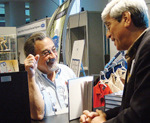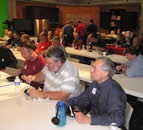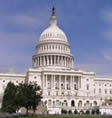Introduction to Television Video and Audio
Course Description
The purpose of this course is to give the television engineer a solid grounding in the various aspects of video and audio for television, and to serve as a ready reference to the pertinent standards. This course provides an overview of video and audio for television, from the dawn of analog television broadcasting to today’s digital television transmission. It is specifically aimed at television in the U.S., although, where appropriate, other world television systems are mentioned.
The basis for all of television as we know it in the United States is NTSC, the analog transmission and production system that was used for broadcast from its inception in the late 1940s until analog transmitters were shut off in the early 21st Century. Nor has NTSC left us entirely. It is still legal to use NTSC transmission for translators and repeaters, and NTSC is required to be distributed on cable systems for the foreseeable future. Further, there is a truly enormous inventory of television programming recorded in NTSC format in the tape vaults of the U.S., which is in constant daily use.
Next, component analog video is covered, along with a tutorial on resolution and a discussion of aspect ratios. This is followed by a chapter on digital video and one on digital scanning formats. Other topics covered include characteristics of the video signal, baseband video interfaces and plant infrastructures; video compression, and video storage, from kinescope to server.
A discussion of analog audio, in addition to providing some historical perspective, introduces basic audio concepts such as levels, mono and stereo, and multichannel audio. This is followed with a discussion of digital audio, including sampling and quantization, interfaces, and digital audio metering.
Audio compression for television discusses the AC-3 audio compression system used in ATSC digital broadcasting. Finally, there is a chapter that looks at audio storage and recording.
Who Will Benefit
This course is for anyone who needs a good grounding in television video and audio, from the relative newcomer to the field who needs to learn all about how television video and audio work, to the old salt who needs to know something about digital. It also serves as a ready reference for the working engineer.
Table of Contents
- Introduction
- NTSC Video and Transmission
- Component Video, Analog Resolution and Aspect Ratio
- Digital Video
- Digital Scanning Formats
- Other SD and HD Video Characteristics
- Baseband Signal Interfaces
- Video Compression for DTV
- Video Storage
- Analog Audio
- Digital Audio
- Digital Audio Compression for Television
- Audio Storage
- Summary
About the Author - Randy Hoffner

Randy Hoffner is retired from ABC Broadcast Operations and Engineering West Coast, where he held the position of manager of technology and quality control. Prior to 2006, Hoffner spent a number of years at ABC BOE New York, where he worked on advanced television projects including HDTV and early film-to-720p video transfers, accomplished using data telecine transfer techniques.
Before joining ABC, Hoffner spent 15 years at NBC, New York, where he worked on technology development projects, including early HDTV work, and held the positions of director of research and development and director of future technology. He also played a large role in the transition of the NBC Television Network and local NBC television stations to stereo broadcasting. He twice received the NBC Technical Excellence Award.
Hoffner is a Fellow of SMPTE, and has served the Audio Engineering Society as convention chairman and vice cresident, Eastern Region, US and Canada. He has authored a number of technical papers presented at SMPTE and AES conventions, and published in their respective Journals. For many years he has written a column, "Technology Corner," for TV Technology.
SBE Recertification Credit
The completion of a course through SBE University qualifies for 1 credit, identified under Category I of the Recertification Schedule for SBE Certifications.
Enrollment Information
To register for the course, click on the link below. You may register using VISA, MasterCard or American Express.
SBE Member Price: $99
Non-Member Price: $149










